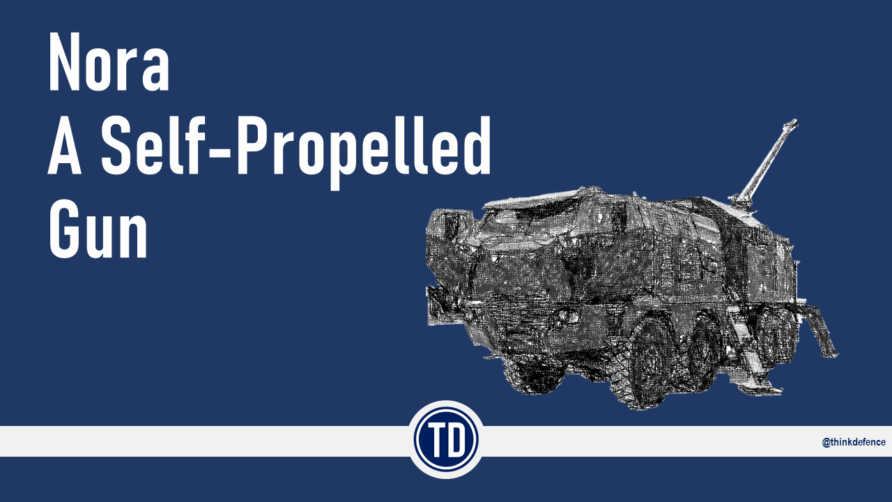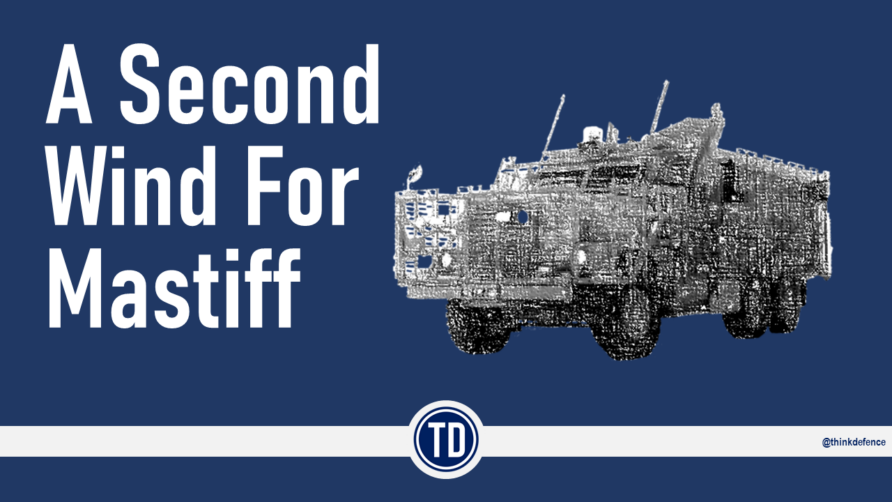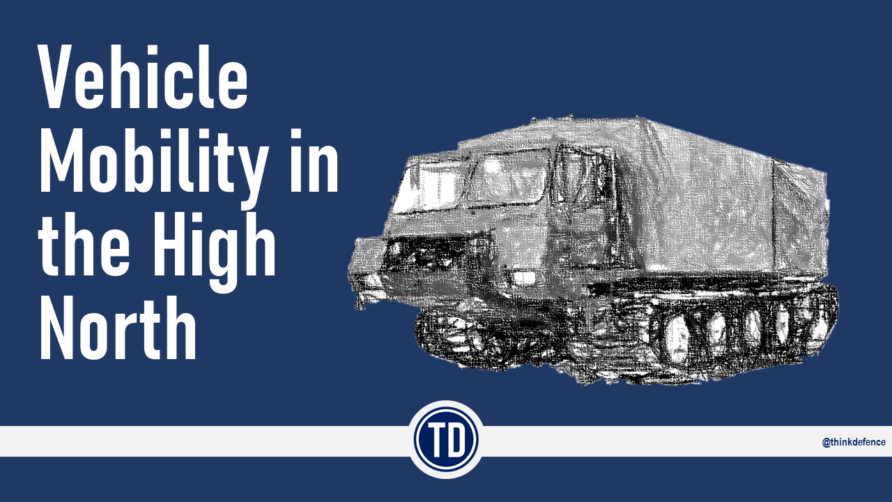The Multi-Role Vehicle — Protected (MRV-P) was defined by the British Army as;
A Category A project intended to meet the requirement for a protected deployable platform employed by all Force Elements, at all scales of effort, in a wide range of environments, and on all parts of the battlefield except for the direct fire zone. The MRV-P should bring commonality to the fleet and reduce the logistics footprint for utility vehicles by 2020.
In common with the majority of British Army vehicle programmes, the Multi-Role Vehicle (Protected) has a long and complicated backstory that is worth understanding to better frame the current options and choices.
Like many similar programmes, MRV-P can trace its roots to the late eighties and the FFLAV study and through a number of similar vehicle programmes.
OUVS was cancelled in 2010, and had been running in parallel with the various protected mobility requirements emerging from Afghanistan and Iraq for some years.
As soon as OUVS was cancelled, work started on the initial concepts for a successor programme.
Transitions between programmes like this are often not as stark as might be imagined, with workstreams merging rather than stopping and restarting.
In any case, the new programme was to be called the Multi-Role Vehicle (Protected).
OUVS was largely a simple replacement for Land Rovers and Pinzgauer but as with FRES, Afghanistan and Iraq had demonstrated that such vehicles would be largely non-deployable into the kinds of theatres the British Army then envisaged itself fighting in.
Multi Role Vehicle (Protected) (MRV(P)) History
In April 2012, the MoD published a contract note for a pre-concept contract.
Specialist and Logistic Vehicle Project Team (SLV PT) in conjunction with a yet to be selected vehicle trials and demonstration authority will be running a multi-role vehicle – protected (MRV-P) pre-concept study;
It is planned to hold the study the week after the defence vehicle demonstration which is being held on 20th & 21.6.2012.
Designed to determine the quantity of platforms that conform to the high-level requirement and fall within the desirable Unit Price Cost (UPC) of 250 000 GBP, the study will look at a number of vehicles in the 5 to 15-tonne range that are modular to may be considered as being able to form the base vehicle for and other programmes such as future protected battlefield multi-role ambulance.
The MRV (P) programme is currently at the pre-concept phase and has evolved from the operational utility vehicle system (OUVS), with significant changes in the total numbers and protection level.
The vision is for one variant to fulfil all roles, using plug-and-play communications and flexible seating layouts.
MRV(P) is not seen as appropriate for providing utility vehicle support to rapidly deployable forces (i.e. first-in, airborne or amphibious), where a lighter, more agile, capability is required.
There are currently no KURs or URD for MRV (P)
The study contract was designed to inform the project team and de-risk the subsequent concept phase.
Roles were to include;
- Command and communications post vehicle
- Command and liaison vehicle
- General-purpose vehicle – cargo
- General-purpose vehicle – passenger
- Light gun towing vehicle
Not specifically connected, but early in 2012, BAE Systems launched the latest 6×6 variant of their RG35 family of vehicles, perhaps thinking it might be a good fit for MRV-P.
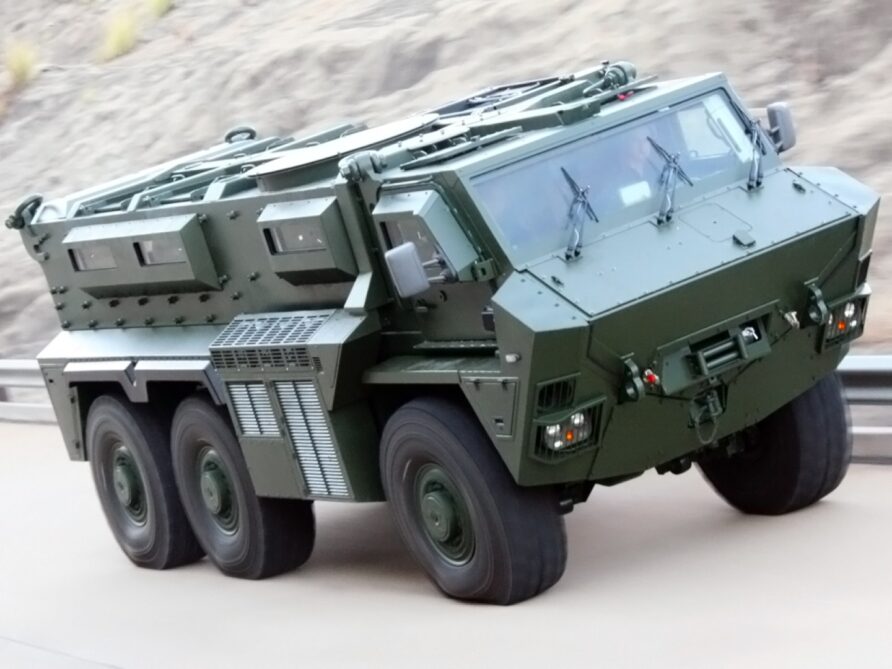
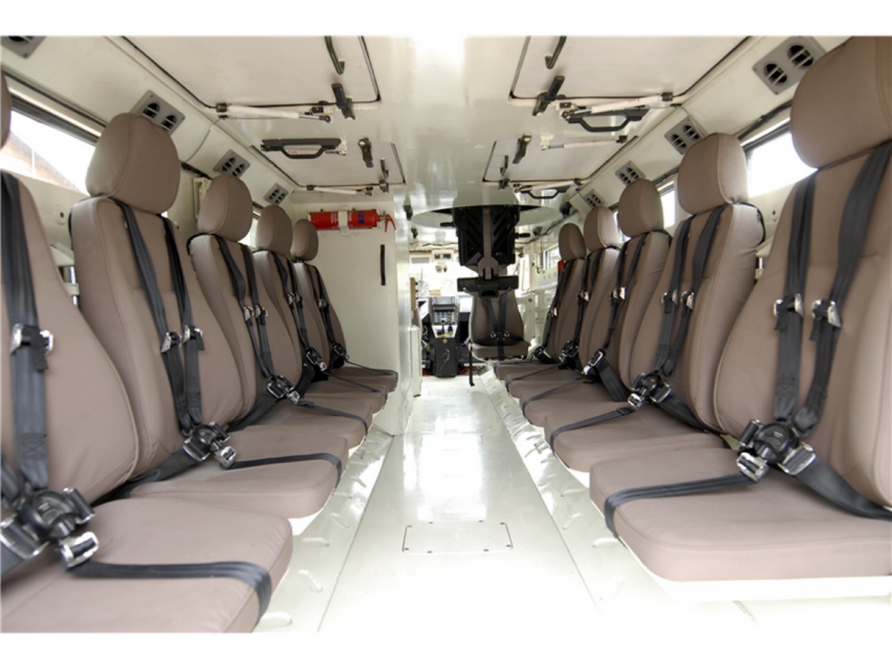
Even at this stage, the requirement for MRV(P) was specified as a Military/Commercial Off the Shelf (MOTS/COTS) vehicle platform(s), i.e., no development.
The payload was defined as greater than 2.5 tonnes, a maximum unloaded weight of 14 tonnes or 10 tonnes if transported by C-130.
C-130 transportability was still a defining characteristic despite, at that stage, the A400M being set to replace the C-130.
The turning circle was specified at less than 18m, compared to 14m for a Land Rover.
Maximum width was 2.5m and mobility was defined as ‘Medium’, not ‘Improved Medium’.
Mobility was further defined by a ground clearance of greater than 240 mm and ground pressure of less than 450Kpa.
Generic Vehicle Architecture 2 compliance and the ability to be fitted with ECM, BOWMAN and an RWS were also specified.
In a sharp departure from OUVS, protection was defined as;
- Ballistic threshold protection (STANAG 4569) level 2 Objective level 3
- Blast threshold protection (STANAG 4569) level 2a/2b Objective level 3a/3b.
Finally, in total lockstep with OUVS several years earlier, the cost was to be no more than £250k.
The concept also noted that despite the variants described above, other requirements such as a future battlefield ambulance could be based on the MRV-P vehicle.
OUVS envisaged two weight classes of vehicle, this initial incarnation of the MRV-P requirement changed this to one.
In a presentation to the industry in 2014, further details on MRV-P were released:
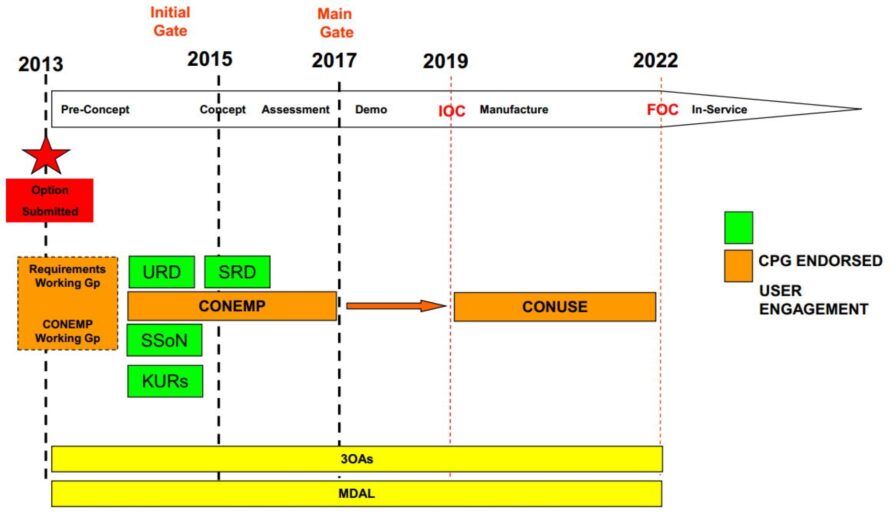
And the details on quantities and timelines:
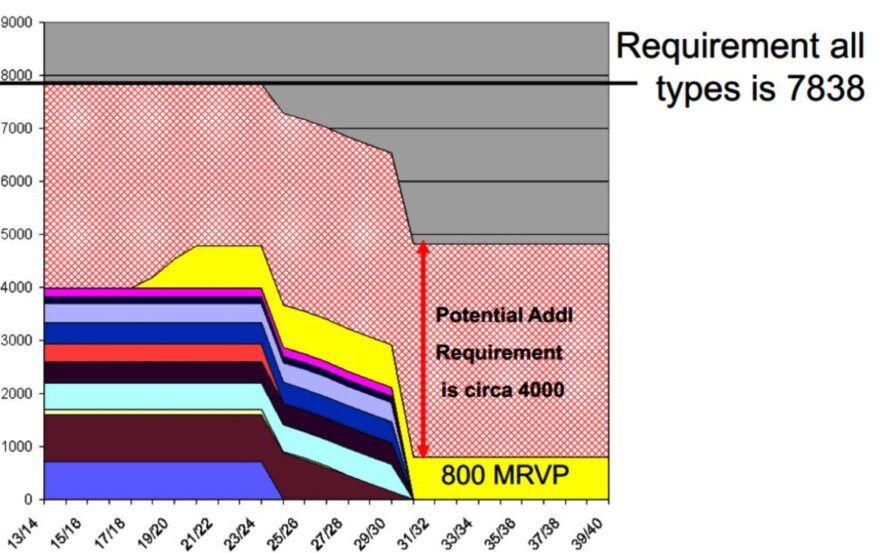
The initial MRV-P requirement was for the order of 800 vehicles with a potential of up to an additional 4,000.
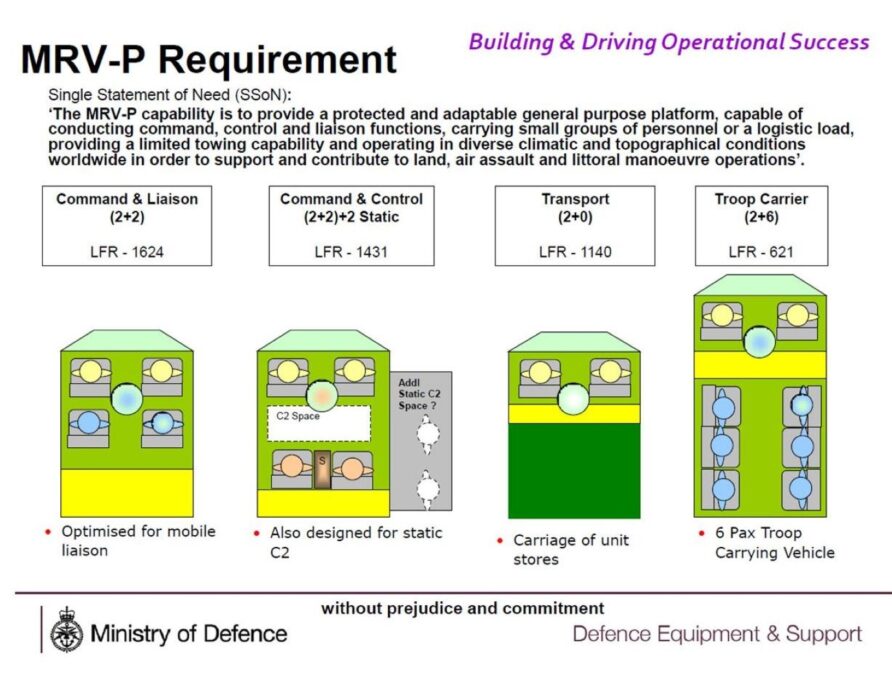
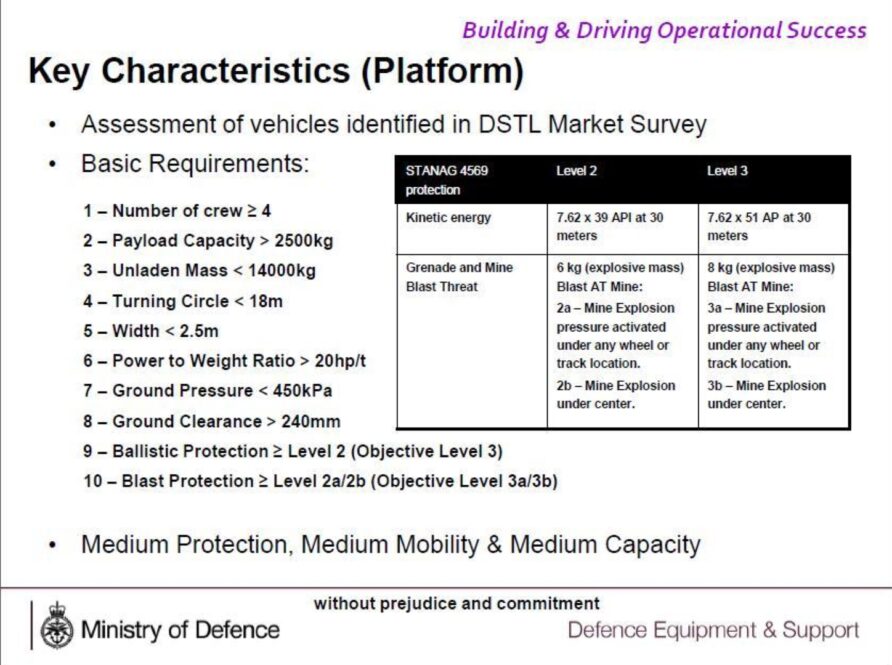
Initial Operating Capability was to be by 2019 and Full Operating Capability by 2022.
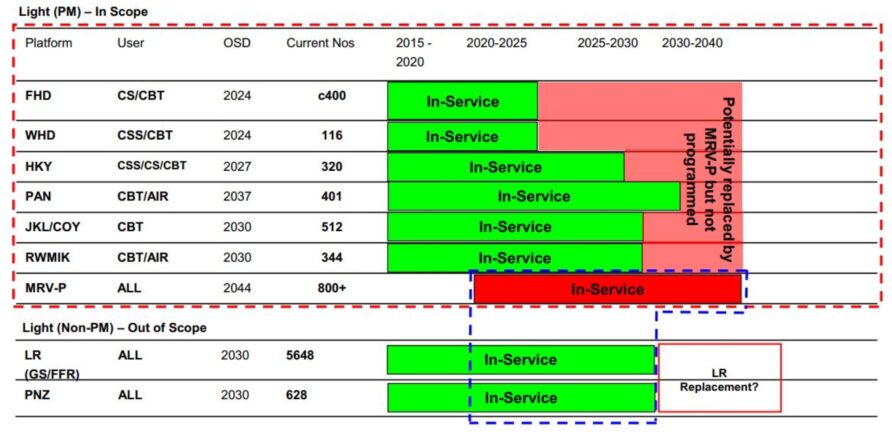
What is interesting from the diagram above is the indication of what vehicle families would be replaced by MRV-P, i.e., none.
It describes how MRV-P may potentially replace Foxhound, Wolfhound, Husky, Panther, Jackal, Coyote and R-WMIK, but these would be subject to subsequent programming.
The 2037 OSD of Panther was also notable, as was the OSD for Foxhound of 2024.
Unlike with OUVS, the non protected Land Rover and Pinzgauer fleet would not be troubled by MRV-P, but instead be subject to a separate programme in the 2030 timeframe.
MRV-P was therefore not intended for early entry forces like 16AAB or 3CDO.
The operational laydown was also described for armoured infantry and mechanised battle groups.
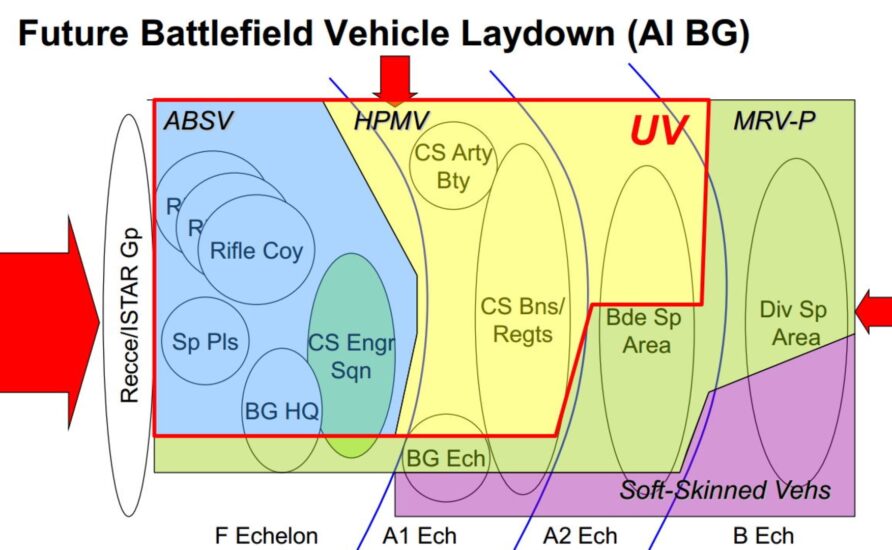
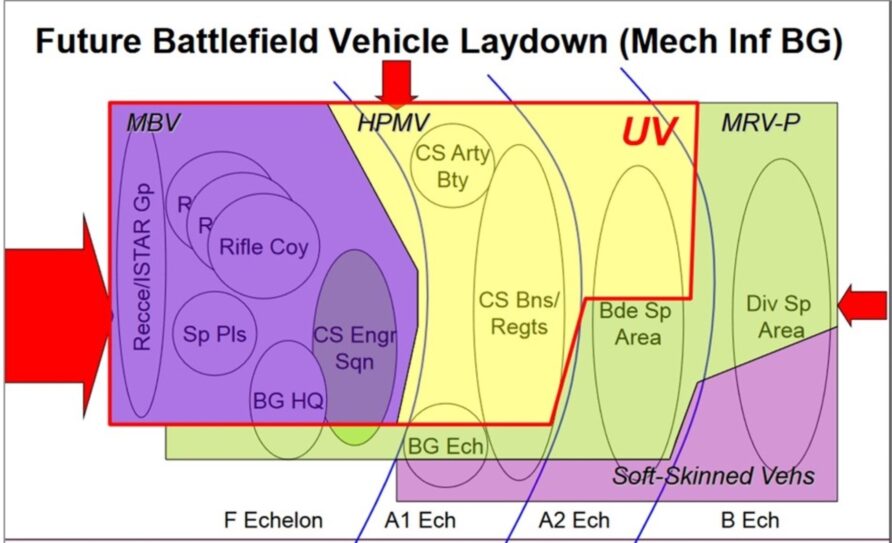
In May 2014, the MoD released details of a number of projects including MRV-P and two related vehicle requirements as part of the Operational Support Programme (OSP)
- Light Weight (Air Portable) Recover (LW(AP)RC) is a Cat D project to meet the requirement for a recovery capability that is air portable and that can wade ashore with Commando Forces to provide intimate support to Very High Readiness (VHR) forces by 2016
- Future Protected Battle Field Ambulance (FPBFA) is a Cat C project to meet the requirement for a Protected Mobility (PM) battlefield multi-role ambulance. This will enable in-theatre protected movement of casualties, whilst delivering expected clinical care by 2020.
As the project progressed within the MoD, the industry started to position its solutions.
General Dynamics, for example, proposed two-vehicle families, either of which could fulfil the requirement, the Eagle, or Foxhound/Ocelot, although the latter would require some further development.
In February 2016, the MoD formally kicked off the Multi-Role Vehicle – Protected (MRV-P) competition and issued a revised requirement.
Supply and Support of a Multi-Role Vehicle Protected (MRV-P) Troop Carrying Vehicle (TCV) and Future Protected Battlefield Ambulance (FPBFA).
Multi-Role Vehicle — Protected (MRV-P) Troop Carrying Vehicle (TCV) and Future Protected Battlefield Ambulance (FPBFA) are intended to be based on a common base platform with sufficient flexibility to satisfy a number of roles.
The TCV and FPBFA variants will support the rapidly deployable forces (i.e. first-in, airborne or amphibious capability) as well as the regular armed forces.
TCV and FPBFA must, therefore, provide protected mobility against real-world scenarios encountered by military forces conducting Global Operations.
Despite the earlier statements that MRV-P would not be used for early entry forces, this new release changed that.
It also indicated the common base vehicle could be used for future roles including EOD, RMP, Engineer Support, and Gun Limber.
Despite this, the MoD also stated there was no requirement for a helicopter underslung carriage for either vehicle.
Principle characteristics of each variant were;
- Troop Carrying Vehicle (TCV). Driver, commander, and seating for 6 personnel
- Future Protected Battlefield Ambulance (FPBFA). Combination of permanent seating for 2 x Medical Attendants seated at the head of the stretcher and ability to transport 2 stretchered casualties or 1 stretchered casualty and 3 Seated Casualties and combinations thereof.
Common requirements included;
An in-service life of at least 25 years.
Expected to be based on Military off the Shelf (MOTS) mature platforms of modern design.
Max width 2,500 mm, Max Height 2,650 mm (transit mode).
Greater than or equal to Medium Mobility classification.
Ballistic threat at protection to Stanag Level 2 and blast threat protection at Stanag Level 2
The expected entry into service was 2019, an estimated value of between £170m and £200m, with initially expected quantities being 150 TCV and 80 FPBFA, potentially rising to 300 each.
The MoD also issued a separate requirement for 27 Light Protected Mobility Recovery (LPMR) vehicles, required to tow 10 tonnes and lift 4. Despite being a separate requirement and not explicitly connected to MRV-P, the headline mobility and protection specifications were the same.
In mid-2016, the MoD revealed that it would be acquiring MRV-P in three packages;
- Package 1: Command and Liaison (CLV), Command and Control (C2V) and General Purpose Logistics (GPV-L)
- Package 2: General Purpose Passenger (GPV) and Ambulance
- Package 3: Recovery
Further briefings cleared up some earlier confusion and provided greater clarity on roles and configurations.
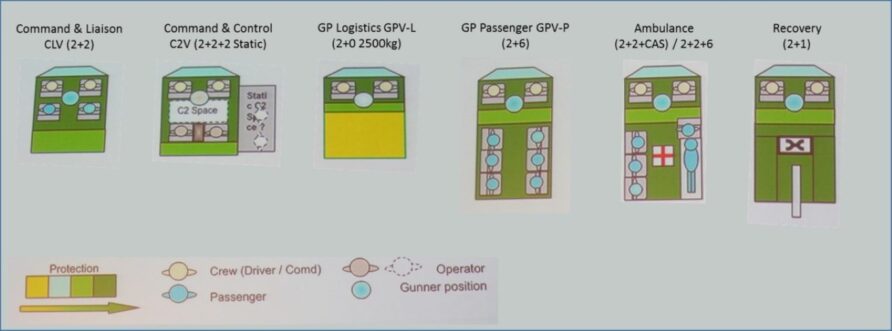
Defense News reported in June 2016 that the UK was in negotiation with the US Department of Defense for the supply of a number of Joint Light Tactical vehicles (JLTV) to meet the MRV-P requirement (Package 1)
The Joint Light Tactical Vehicle could be in line to win its first export order even before the US Department of Defense makes a decision to order full-rate production of the platform. The UK’s Ministry of Defence has revealed it is in talks with the Pentagon, which might lead to a Foreign Military Sales (FMS) deal. The British Army is interested in acquiring the Oshkosh Defense vehicle, set to replace the Army and Marine Corps Humvees, to meet part of a requirement known as the Multi-Role Vehicle-Protected (MRV-P).
Package 3 was then reported to be on hold and Package 1 and 2 would potentially be different vehicles, the Rheinmetall Survivor-R, Thales Hawkei, General Dynamics Eagle and others were mentioned as a potential contenders for Package 2.
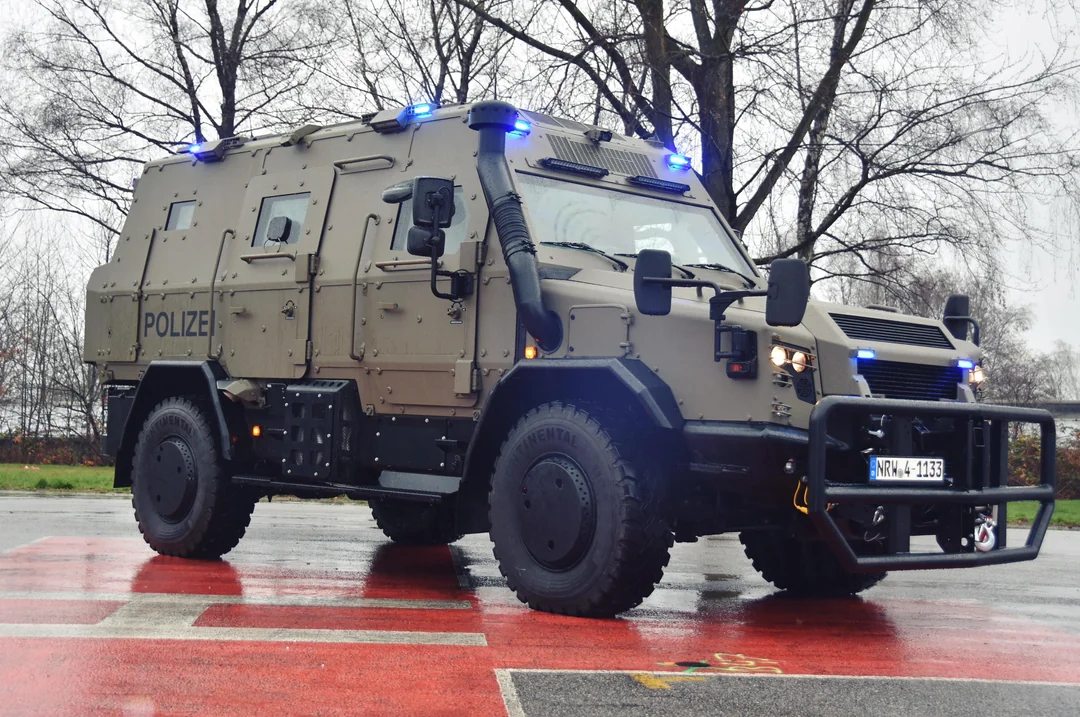
To meet MRV-P Package 3 (despite it being on hold), Supacat showed an HMT-600 based recovery vehicle.
In September 2016, Janes reported on the progress of MRV-P.
Group 1 (Package 1) would be met with an off the shelf purchase of the Oshkosh Joint Light Tactical Vehicle (JLTV) via a Foreign Military Sale (FMS) arrangement.
This surprised many given that JLTV had been rejected by the pre-cursor to MRV-P, the Operational Utility Vehicle System (OUVS)
The larger vehicle, Group 2 (Package 2) would be decided by competition in October/November.
Group 2 could be met with either a 4×4 or 6×6 vehicle with the two variants as described above, the Troop Carrying Vehicle (TCV) and the Future Protected Battlefield Ambulance (FPBFA)
Manufacturers in the down-select were BAE Systems Land (UK) with a design from Penman, General Dynamics with the MOWAG Eagle 6×6, Rheinmetall with the Survivor-R, and Thales with the Bushmaster.
A media interview with Major General Robert Talbot Rice, Director of Land Equipment at the Defence Equipment and Support (DE&S) organisation highlighted the reason for the change in procurement strategy for Group 1
We are working through the Foreign Military Sales process.
A letter of request has been sent to our American colleagues, and we expect a response in the next few months. By tagging onto the US JLTV order the UK could obtain a price point for the UK requirement that was never going to be matched by any other contender
JLTV was compliant, JLTV was reportedly cheap, simple as that
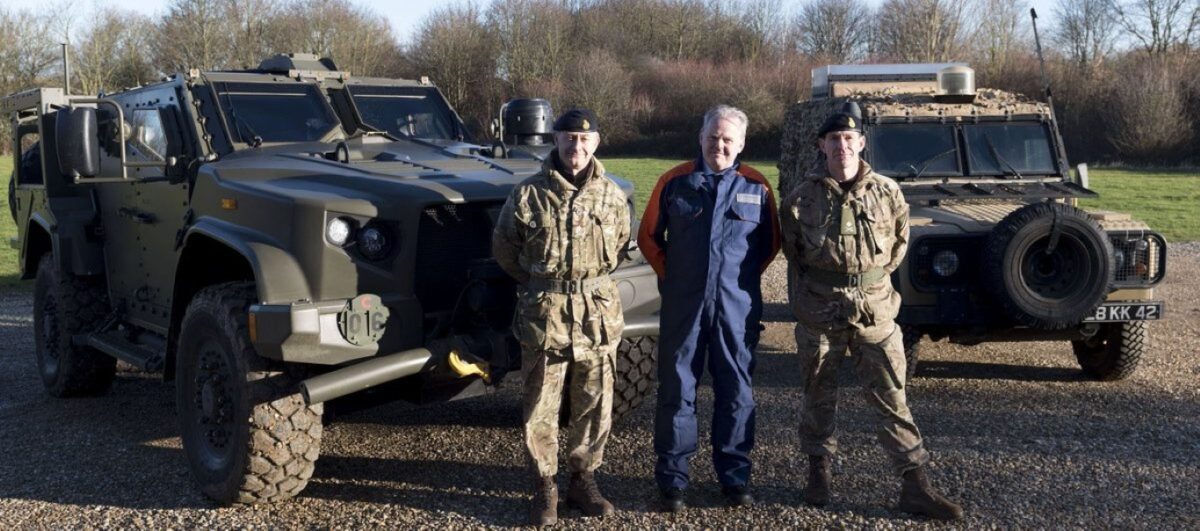
The same media report also speculated that the three remaining contenders for Group 2 were;
Thales Bushmaster
General Dynamics Eagle V
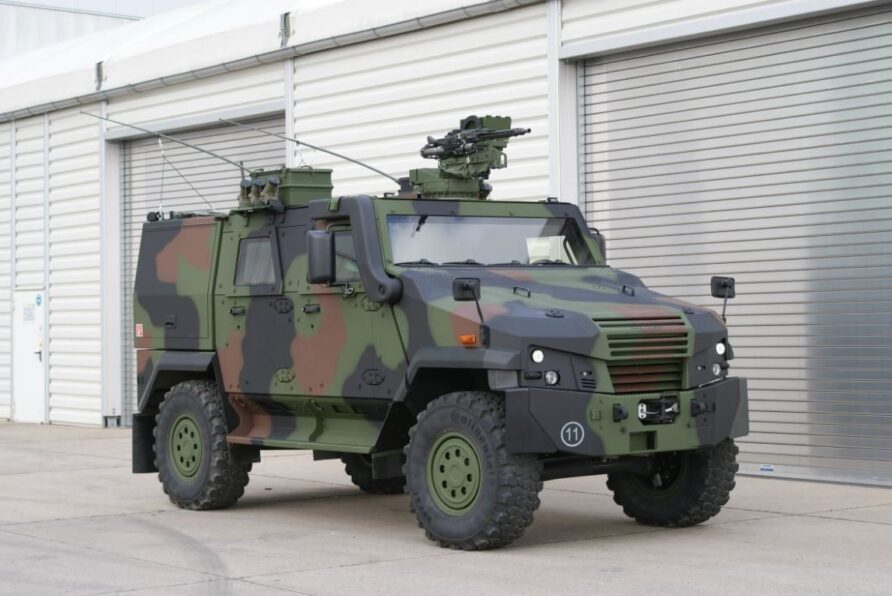
Mercedes Benz with an MRV-P compliant body on their FGA 14.5 chassis (Unimog)
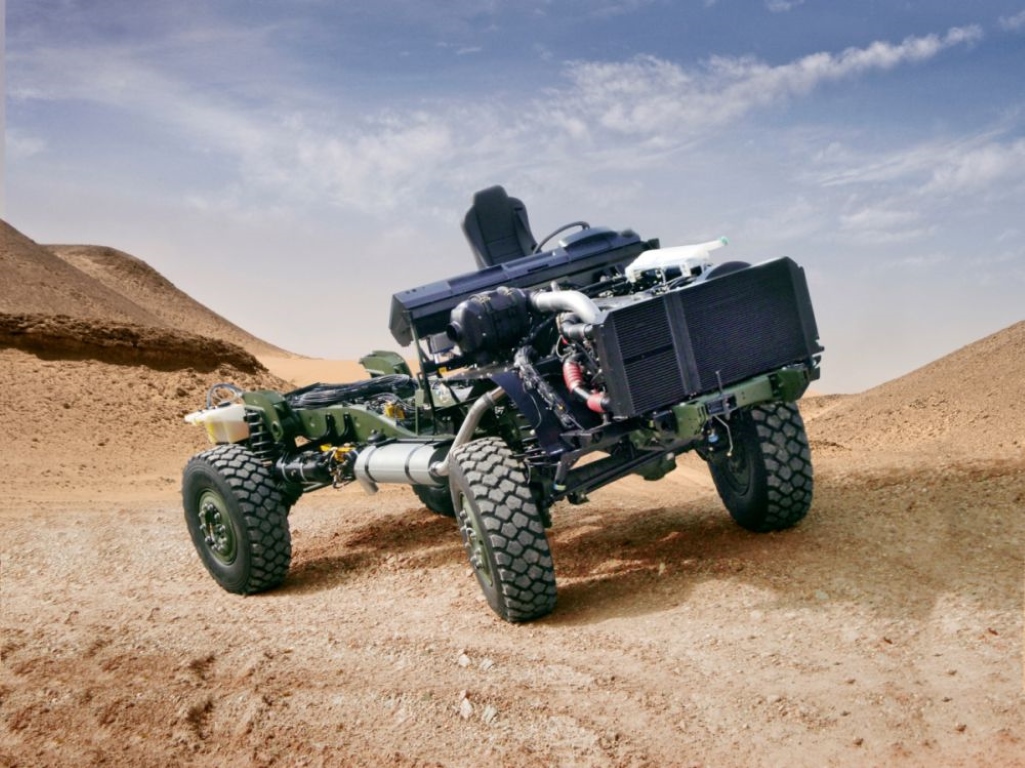
This report was different from previous indications of the Group 2 down select, gone were Penman and Rheinmetall, and seemingly in from the left-field, Mercedes with their FGA chassis.
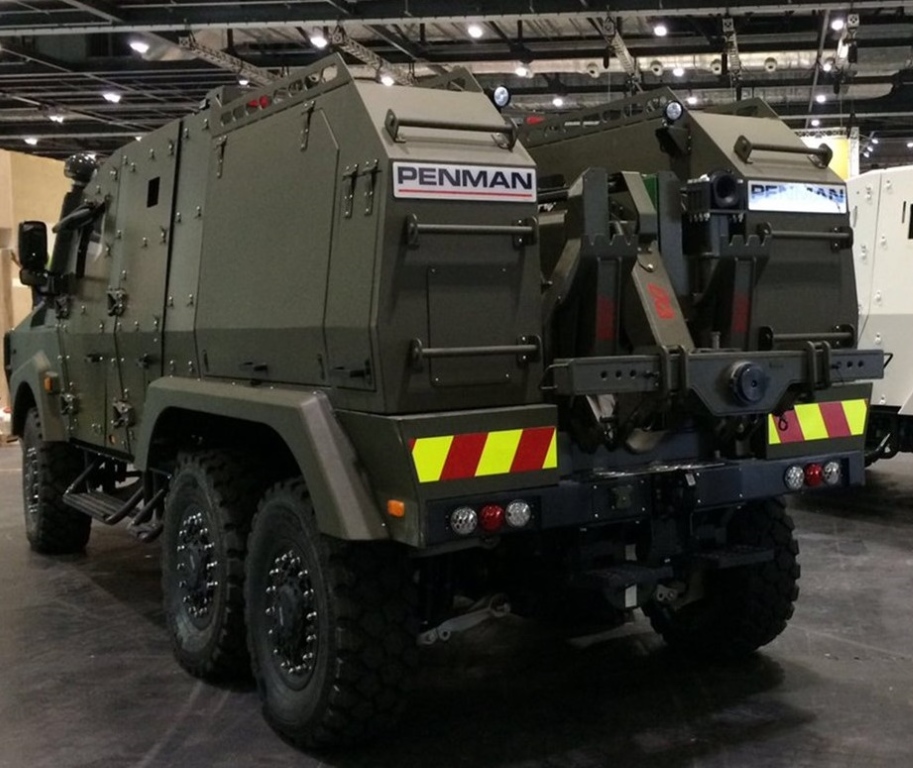
In July 2017, the DCSA published details of the Foreign Military Sale (FMS) of the Oshkosh JLTV to the UK.
WASHINGTON, Jul. 10, 2017 – The State Department has made a determination approving a possible Foreign Military Sale to the United Kingdom for Joint Light Tactical Vehicles (JLTV) and accessories. The estimated cost is $1.035 billion. The Defense Security Cooperation Agency delivered the required certification notifying Congress of this possible sale today. The Government of the United Kingdom (UK) has requested a possible sale of up to two thousand seven hundred forty-seven (2,747) Joint Light Tactical Vehicles (JLTV). This possible sale also includes baseline integration kits, basic issue item kits, B-kit armor, engine arctic kits, fording kits, run-flat kits, spare tire kits, silent watch kits, power expansion kits cargo cover kits, maintainer and operator training, U.S. government technical assistance and logistics support services, and other related elements of logistics and program support. Total estimated cost is $1.035 billion
This was for MRV-P Group 1, although the total quantities were much higher than previously indicated.
Supacat launched a new version of their HMT600 based recovery vehicle to meet the requirements of the Light Weight (Air Portable) Recovery Capability (LW(AP)RC) programme.
High levels of commonality with the in-service Jackal and Coyote would be obvious advantages.
In the 2016-19 DE&S Corporate Plan, MRV-P was described as;
A general-purpose vehicle in command & control, liaison, logistics and personnel carrier variants, with improved protection over current fleets. Future Protected Battlefield Ambulance and Lightweight Protected Mobile Recovery projects have been linked to MRV-P to drive efficiencies
This confirmed the link between MRV-P and the lightweight mobile recovery project.
Thales launched their MR6 variant of the Bushmaster in early 2018.
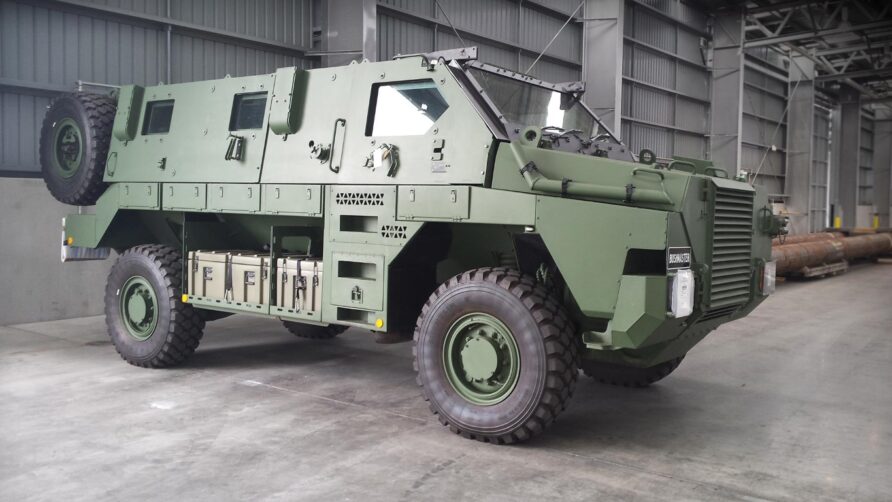
A Parliamentary Question asked on the 13th April 2018 confirmed current status;
Nia Griffith:
To ask the Secretary of State for Defence, what recent progress had been made on the Multi Role Vehicle (Protected) Group (a) 1 and (b) 2 contracts.
Guto Bebb:
The Multi-Role Vehicle – Protected (MRV-P) programme is being delivered in two packages.
For package 1, the Command, Liaison and Logistics vehicles, the Joint Light Tactical Vehicle manufactured in the United States by Oshkosh has been identified as the preferred option, with the US Department of Defense Foreign Military Sales acceptance letters expected to be signed shortly.
Package 2 will provide the Troop Carrying Vehicles and Future Protected Battlefield Ambulance, and is currently the subject of an ongoing competition, with a decision expected in early 2019.
On Tuesday, the 9th of October 2018, the Defence Select Committee held an evidence session to discuss the MoD’s annual report and accounts, during which MRV-P was raised.
You can, of course, listen to the whole session but relevant points are extracted below;
Chair: Okay. I am going to follow on from that with a question about the fleet solid support ships that are going to be built. I just want to preface that by saying that we spent quite a bit of time talking about the non competition for the Sentry replacement. Previously, we have had a similar conversation about the non-competition for Boxer, which was chosen as the military vehicle without competitors having a chance to present something. I have also recently been alerted to a vehicle called MRV-Protected. We are apparently minded to go for a replacement from the United States called the JLTV on the grounds that it would cost £330,000 a copy. Since we went towards that non-competitive approach, it appears that the final price per copy of this vehicle could be as much as £800,000. There seems to be a tendency to go for these choices without going down the route of competitiveness.
Cat Little: MRV-P quite simply has not yet gone through an investment approval decision. It is caught up in the modernising defence proposition. You are quite right to say that there are two packages that we are currently looking at, but at this stage we have not made any decisions about single source or—
Chair: Are you aware that the proposed price might end up more than twice as much as originally specified?
Cat Little: I greatly look forward to seeing the team when they come to present that to me when I chair the committee to look at it, but I have not yet—Chair: You are aware of it now, anyway.
Cat Little: I am now aware of it, and I am now going to go away and have a further look at it. Certainly at this stage we have not yet gone through the formal decision-making process.
Lieutenant General Sir Mark Poffley: I would be very interested in where that figure came from, because it is not a figure that I recognise whatsoever—in fact, far closer to your first figure than the second figure.
Although not specific to MRV-P, it was also revealed that UK economic benefit to obtaining from UK manufacturers was considered, but not specifically in the investment approval calculations.
Another Parliamentary Question confirmed that JLTV was still the preferred option for Package 1 but Package 2 would be contracted in early 2020, a year later than planned.
30 September 2019; The Multi-Role Vehicle – Protected programme is being delivered in two packages.
The Joint Light Tactical Vehicle (JLTV) has been identified as the preferred option for Package 1, Command, Liaison and Logistic Vehicles, procured through a Foreign Military Sales case. A decision on the procurement of JLTV is due in 2020.
For Package 2, Troop Carrying Vehicles and Future Protected Battlefield Ambulances, the competition is ongoing. Subject to the conclusion of current negotiations and internal approvals, the competition winner is planned to be on contract early in 2020.
Following the Integrated Review, MRV-P was back on the drawing board, with The British Army’s Head of Strategy Brigadier John Clark saying;
The Multi-Role Vehicle-Protected programme will modernise the army’s light mobility fleet, delivering vehicles in two packages for both the new Heavy and Light Brigade Combat Teams. Following the Integrated Review and the Defence Command Paper, we are reviewing options for both MRV-P packages
MRV-P was not mentioned in the 2021 Integrated Review or Future Soldier materials, leading many to speculate it had been cancelled.
In May 2022, the UK ruled out progressing the JLTV order.
A spokesperson for the UK MoD confirmed to Shephard that the army has ended the proposed MRV-P Package 1, which comprised acquisition of JLTVs. ‘This difficult decision took into consideration affordability and the requirement to deliver several major army programmes within the same period,’ the official stressed.
Later in 2022, the British Army outlined a new approach, signalling the end of MRV-P.
In early 2023, a Pre Procurement Notice was published by the MoD.
Protected Mobility Pipeline – Early Engagement
Protected Mobility Pipeline Industry Engagement Day
The primary aim of the day is to Notify industry that we intend to undertake some Early Market Engagement for the Protected Mobility Pipeline programme being developed within Army Headquarters. The programme vision is to deliver a coherent, integrated, and competitive fleet of Protected Mobility (PM) platforms to meet the demands of the Land Environment. Programme Capability Goals:
- A rationalised PM fleet that meets the appropriate protection and mobility levels, whilst enabling adaptation to a range of missions and threats at the speed of relevance.
- A PM Pipeline procured at pace, to deliver a coherent and integrated fleet.
- To achieve a capable and sustainable PM Supply Chain with the resilience to upkeep, update, upgrade.
This day will start with a presentation from the programme team outlining our progress and requirements. The objectives for the day:
- Understand industry appetite and possible opportunities to meet a variety of projects which sit within the programme.
- Understand constraints on industry which the programme will need to take into consideration.
At the end of the Industry day, RFIs (Requests for Information) may be issued to request input from those in industry that wish to respond.
The Authority reserves the right to then hold bi-lateral meetings based on those responses.
A 20th June 2023 Parliamentary Answer detailed the new approach
John Healey, Labour, Wentworth and Dearne Commons
To ask the Secretary of State for Defence, what capabilities will be acquired through the Protected Mobility Pipeline programme.
James Cartlidge, Conservative, South Suffolk Commons
The Protected Mobility Pipeline Programme is in its concept phase. Subject to confirmation during the approvals process, it is anticipated that the Programme will seek to deliver four categories of platforms (as individual projects), plus coherence with legacy platforms:
- General Support Utility Platform
- Light Protected Mobility Platform
- Medium Protected Mobility Platform
- Heavy Protected Mobility Platform
Due to the complexity of different projects within the Programme construct, each of the Projects will have their own Initial Operating Capability and Full Operating Capability milestones.
In July 2023, the British Army’s Lightweight Recovery Vehicle (LWRV) reached Initial Operating Capability.
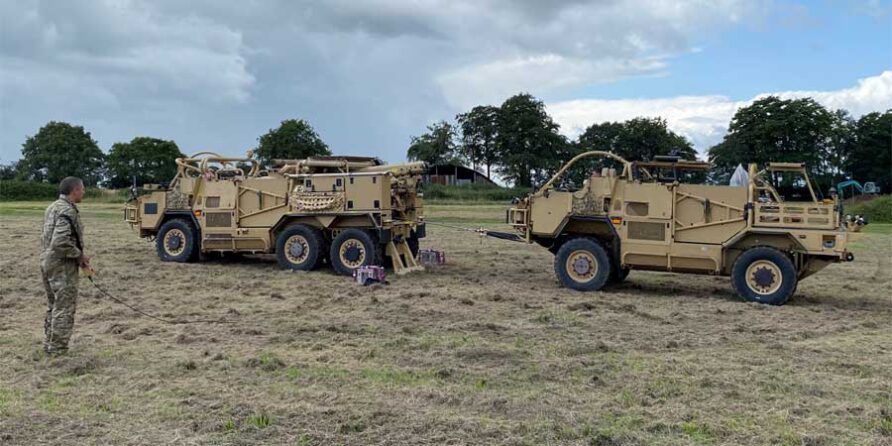
And that was the end of MRV-P
Before reading on, would you mind if I brought this to your attention?
Think Defence is a hobby, a serious hobby, but a hobby nonetheless.
I want to avoid charging for content, but hosting fees, software subscriptions and other services add up, so to help me keep the show on the road, I ask that you support the site in any way you can. It is hugely appreciated.
Advertising
You might see Google adverts depending on where you are on the site, please click one if it interests you. I know they can be annoying, but they are the one thing that returns the most.
Make a Donation
Donations can be made at a third-party site called Ko_fi.

Think Defence Merch
Everything from a Brimstone sticker to a Bailey Bridge duvet cover, pop over to the Think Defence Merchandise Store at Red Bubble.
Some might be marked as ‘mature content’ because it is a firearm!
Affiliate Links
Amazon and the occasional product link might appear in the content, you know the drill, I get a small cut if you go on to make a purchase
Discover more from Think Defence
Subscribe to get the latest posts sent to your email.


